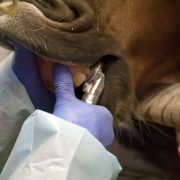Antimicrobial resistance – a One Health problem: Human health
spotlight topic:
2.a. Human health
Published 29 April 2021 | updated 15 March 2024
- Chakrawarti, A. et al. (2024) An observational study demonstrates human-adapted Staphylococcus aureus strains have a higher frequency of antibiotic resistance compared to cattle-adapted strains isolated from dairy farms making farmstead cheese. BMC Veterinary Research, 20, no. 75. https://doi.org/10.1186/s12917-024-03910-6
- Gratwick, Z. (2023) MRSA infections in horses. Equine Veterinary Education, 35 (11) pp. 577-579. https://doi.org/10.1111/eve.13881
- Werhahn, B. et al. (2023) Carriage of extended spectrum beta lactamase-producing Escherichia coli: Prevalence and factors associated with fecal colonization of dogs from a pet clinic in lower Saxony, Germany. Animals, 13, no. 584. https://doi.org/10.3390/ani13040584
- et al The nose is not enough: Multi-site sampling is best for MRSP detection in dogs and households. Veterinary Dermatology, https://doi.org/10.1111/vde.13118
- Naziri, Z., Poormaleknia, M. and Ghaedi Oliyaei, A. (2022) Risk of sharing resistant bacteria and/or resistance elements between dogs and their owners. BMC Veterinary Research, 18, no. 203. https://doi.org/10.1186/s12917-022-03298-1
- Hoelzer, K. et al (2017) Antimicrobial drug use in food-producing animals and associated human health risks: what, and how strong, is the evidence? BMC Veterinary Research, 13, no. 211. https://doi.org/10.1186/s12917-017-1131-3
- Innes, G.K. et al (2020) External societal costs of antimicrobial resistance in humans attributable to antimicrobial use in livestock. Annual Review of Public Health, 41, pp. 141-157. https://doi.org/10.1146/annurev-publhealth-040218-043954
- Crespo-Piazuelo, D. and Lawlor, P.G. (2021) Livestock-associated methicillin-resistant Staphylococcus aureus (LA-MRSA) prevalence in humans in close contact with animals and measures to reduce on-farm colonisation. Irish Veterinary Journal, 74, no. 21 (2021). https://doi.org/10.1186/s13620-021-00200-7
- Tóth, A.G. et al (2020) Antimicrobial resistance genes in raw milk for human consumption. Scientific Reports, 10 (1), pp. 1-7. https://doi.org/10.1038/s41598-020-63675-4
- Tang, K.L. et al (2017) Restricting the use of antibiotics in food-producing animals and its associations with antibiotic resistance in food-producing animals and human beings: a systematic review and meta-analysis. The Lancet Planetary Health, 1 (8), pp. e316-e327. https://doi.org/10.1016/S2542-5196(17)30141-9
- Pomba, C. et al (2017) Public health risk of antimicrobial resistance transfer from companion animals. Journal of Antimicrobial Chemotherapy, 72 (4), pp. 957-968. https://doi.org/10.1093/jac/dkw481
- Ferradas, C. et al (2022) Risk factors for antimicrobial resistance among Staphylococcus isolated from pets living with a patient diagnosed with methicillin‐resistant Staphylococcus aureus infection. Zoonoses and Public Health. https://doi.org/10.1111/zph.12946
- Wulf, M.W.H. (2008) Prevalence of methicillin-resistant Staphylococcus aureus among veterinarians: an international study. Clinical Microbiology and Infection, 14 (1), pp. 29-34. https://doi.org/10.1111/j.1469-0691.2007.01873.x
- Loeffler, A. et al (2005) Prevalence of methicillin-resistant Staphylococcus aureus among staff and pets in a small animal referral hospital in the UK. Journal of Antimicrobial Chemotherapy, 56 (4), pp. 692-697. https://doi.org/10.1093/jac/dki312
- Leonard, F.C. and Markey, B.K. (2008) Meticillin-resistant Staphylococcus aureus in animals: a review. The Veterinary Journal, 175 (1), pp. 27-36. https://doi.org/10.1016/j.tvjl.2006.11.008





Leave a Reply
Want to join the discussion?Feel free to contribute!